From a fledgling browser, how did Google Chrome beat the king of Internet Explorer in just 4 years?
- Tram Ho
In just four years, Google’s Chrome browser has risen from a fledgling project into the browser king we know today. Currently, Chrome is the most popular browser in the world on both computers and mobile devices. You could even say that Chrome has pushed Internet Explorer to death. So, how did Google accomplish this incredible feat in such a short time?

Microsoft, along with Mozilla and others, builds their browsers on legacy code. Google used some existing tools to create Chrome, but for the most part, they used completely new ways to develop the browser.
When Google jumped into the game, Microsoft didn’t really bother about bringing major changes to the browser experience. In fact, Internet Explorer worked the same way in 2008 as it did in 1998. Google had plans to change all of that. Originally, Chrome was seen as a platform to explore the web in a new way, not just a browser. These aspirations fueled Google to innovate in a number of important ways, eventually breaking through with the largest browser market share in 2012.
Let’s take a look at how Google took Chrome to the top from 2008 to 2012.
2008: Beta release
Google released a beta version of its Chrome browser on September 2, 2008. It’s a very exciting time in the tech industry. Smartphones were still relatively new and apps weren’t really a big deal back in 2008. For the future, Google has developed Chrome with its HTML layout engine, WebKit, which will support web applications as services. their popular map. At the time of the beta launch, Google did a comic strip to explain why they made a new browser out of a bunch of existing choices.
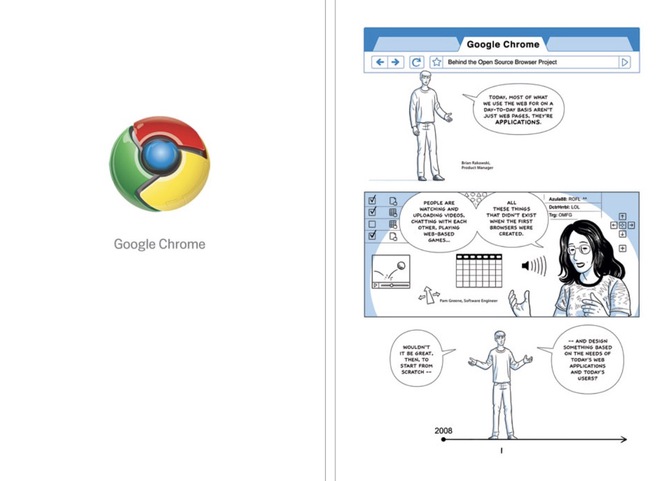
The manga is quite long, up to 39 pages, but the first page shows the philosophy of Google. In their minds, the browser experience was completely out of date. People don’t use the Internet to just access research papers for school anymore, the web space is a vast place with tons of content to explore. Perhaps Chrome’s biggest unique advantage early on was the sandbox environment of separate browser tabs. Browser crashes are quite common, especially on Internet Explorer. The sandbox means that if one tab crashes, the entire session won’t go down because of it.
Sandboxing separate tabs is a move towards the future of the web, where apps will replace the web as the primary tool for users. With this in mind, Google has taken the next important step in capturing the browser market. In September 2008, the open source Chromium project was launched. Open source code was not only popular at the time, but also attracted developers’ interest in Chrome. Google knows they need developers to accelerate improvements to Chrome, as well as creativity for their upcoming library of extensions.
2009: Chrome OS and extensions
By 2009, it was clear that Chrome was gaining traction. That summer, Google announced that it was building an entire operating system based on Chrome, named simply ‘Chrome OS’. At the same time, users are switching to Chrome more and more. In July 2009, more than 30 million people used Google’s new browser. The user base hitting 30 million people in less than a year is pretty unbelievable, certainly unheard of in the browser wars.
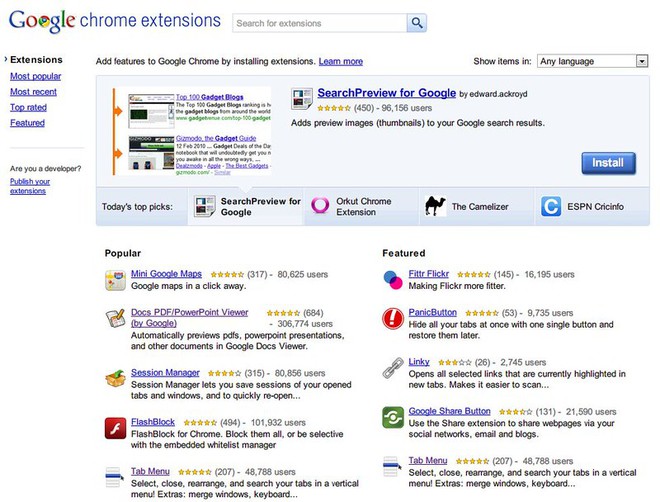
While Chrome OS and its growing user base are important, they weren’t Chrome’s biggest successes of 2009. In December 2009, Google launched its own library of extensions revolution at that time. This is the big turning point, which Google hopes will be able to convince users that apps are the future of web browsing.
Users and developers both love extensions. In just over a year, the extension library has more than 10,000 widgets and themes. Customization is a deeply personal expression, and people accept the idea of personalizing the look and functionality of their browsers.
At the end of 2009, Chrome had 5% market share. While that number may seem small, keep in mind that this is a brand new product that is fighting to compete in an age-old market. Themes and extensions, along with Chrome’s incredible sandboxing speed, are poised to help Google capture even greater market share in 2010.
2010: Monetization and Chrome store
With Chrome growing at breakneck speed, it’s time for Google to start monetizing this success. In August 2010, Google started charging developers $5 to release their Chrome apps in the extension library. This is both an income opportunity and a security measure. The $5 fee allows Google to implement domain verification for all new apps submitted for release.
Throughout that year, Chrome continued to see its biggest user gain ever. Tripled from 40 million to 120 million in 2010, Google threatened Microsoft’s top spot in browser market share. Perhaps the most interesting thing is that Microsoft did nothing to stop Chrome from moving to the top. Most of the features that IE9 adds to Windows already exist in Chrome. If Microsoft had released a redesigned version of IE in 2010, it would have at least delayed Chrome’s rise to No.

In late 2010, Google launched the Chrome Web Store. Unlike the previous small library of extensions, this is a more diverse app store for Chrome users. New developers joined in, and Chrome quickly became not only the fastest, but also the most versatile.
Extensions, plugins, and themes in the Chrome Web Store have shaped the way people use the web and even monetize web content. With ad-blocking extensions appearing, the traditional method of monetizing web content with ads is no longer viable. This has presented opportunities for Google to innovate in their other key business area today – advertising itself.
Chrome’s development is on a successful journey and does things differently than every other browser, but Google is still not satisfied. It’s time for Chrome to get some new tricks, specialized hardware, and new identity.
2011: New logo, Chromebook and New Tab page
From the very beginning, Chrome had a 3D logo. By March 2011, that design looked pretty outdated. Apple started the trend of bringing flat icons to iOS, and Google didn’t want their design to seem out of place. Google made a small change in the design, but it had a sizable impact. Keeping the same color scheme, Google has flattened Chrome’s logo to give it a more modern look.
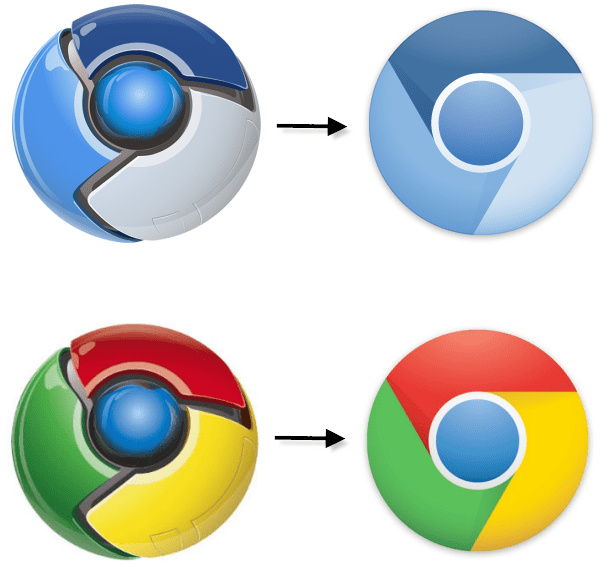
In May 2011, Google launched Chromebooks. While netbooks were quite popular in 2011, the idea of a laptop without a hard drive was quite alien. Chromebooks will handle all tasks through the Chrome browser. At first, Chromebook market share was stalled by Apple’s iPad launch. Thankfully, with persistence from OEMs and tweaks from Google, Chromebooks have become a hit, especially in the education sector.
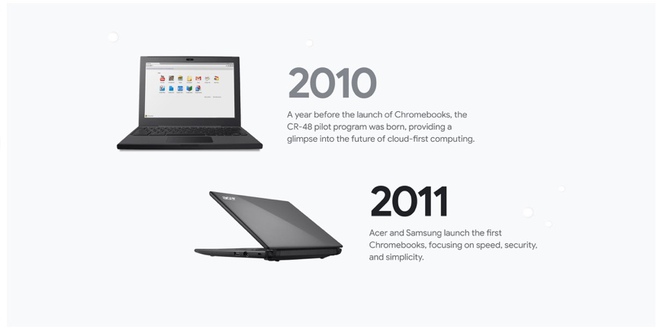
With Chrome OS running on dedicated hardware, Google took another avenue to increase the user base for Chrome as a browser. Over the next decade, Chromebooks will become popular in the budget PC segment, which now runs both Android and Linux apps.
To wrap up 2011, Chrome launched another feature that will soon become standard across all browsers – the New Tab Page. Although extremely simple, this is a very attractive idea. It makes sense to aggregate all of your favorite Chrome apps or pages as soon as you open a new tab. When people customize the new tab page, it makes browsing easier and more intuitive.
By the end of 2011, Chrome had nearly 25% of the market share, roughly equaling Firefox’s second place. To make the final leap, Google needs to bring Chrome to mobile devices.
2012: Chrome arrives on Android and iOS
Looking back, it’s surprising that it took four years for Google to bring Chrome to Android. Android officially became an operating system in September 2008, around the same time the Chrome beta was released. Since these are both Google products with similar launch dates, Chrome should have launched on Android before 2012. However, mobile is the most important platform Google needs to take the top spot. board. They don’t want to spoil that.
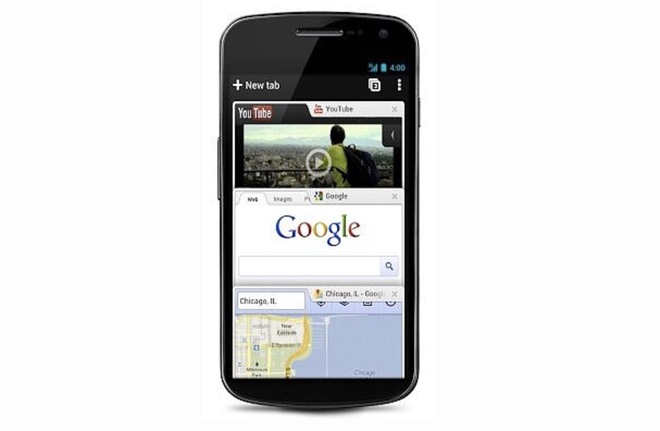
In February 2012, Chrome finally launched on Android. With millions of active Android devices, this is a huge catalyst to capture a lot of market share in one go. Just four months later, Google launched Chrome for iOS. While Safari is still more popular among iPhone users, the opportunity to capture a portion of that user base is huge. It is only a few months from now for Google to completely overthrow Microsoft.
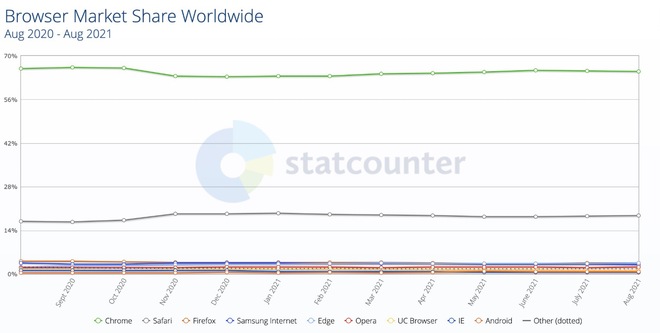
Near the end of summer 2012, Google was announced to have led the browser market share, with 31% of users choosing Chrome. Microsoft certainly helped hasten its own demise by not really innovating with Internet Explorer features, at a time when Chrome was already looking to the future of web apps. According to Statcounter, by August 2021, Chrome occupies 65% of the browser market share.
Reference: XDA-Developers
Source : Genk
